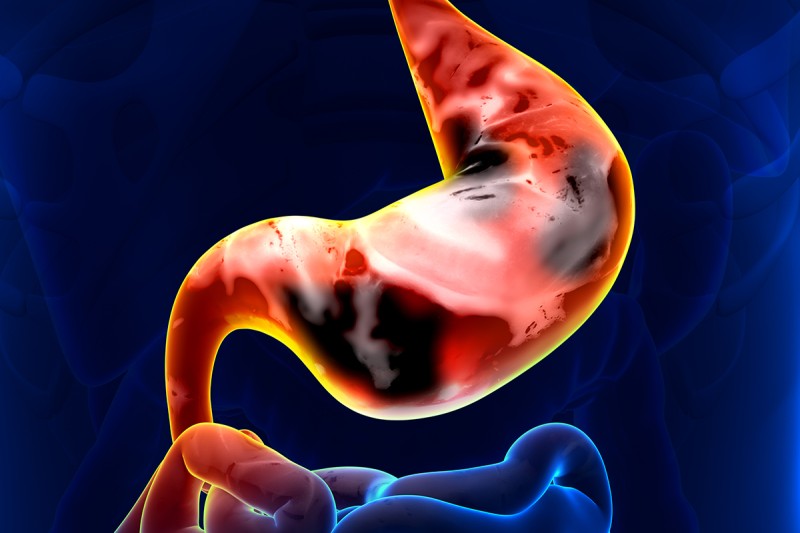
The “pocket-creation method” is the latest advance in endoscopic submucosal dissection, a technique for the removal of early-stage gastrointestinal cancers, further boosting its superiority over the standard approach of using endoscopic mucosal resection.
Endoscopic submucosal dissection (ESD) can achieve resection of tumors en bloc, can remove larger tumors, and is associated with lower short-term local recurrence rates compared to endoscopic mucosal resection (EMR).
However, ESD is a technically challenging and time-consuming technique that requires specialized training and expertise. (1), (2)
One of the issues with ESD is that the sodium hyaluronate solution injected into the submucosal layer before dissection can disappear during lengthy procedures involving large, fatty lesions. To address this issue, Professor Hironori Yamamoto, my mentor at Jichi Medical University in Japan, where I obtained my training, developed the “pocket-creation method.” It provides all of the benefits of ESD but is much easier and faster to perform.
Endoscopic Submucosal Dissection
Endoscopic submucosal dissection can be used to remove early cancers in the esophagus, stomach, colon, or rectum. ESD allows a skilled endoscopist to remove larger, superficial cancers en bloc, rather than in multiple pieces as with traditional endoscopic mucosal resection. (3)As a result, pathologists can stage the cancer more accurately. Often, ESD obviates the need for more radical surgery, preserving healthy tissue. It also allows us to determine whether patients require further therapy with a higher level of accuracy.
For a study published in 2011 in Therapeutic Gastrointestinal Endoscopy, of which I was the first author, my research colleagues and I examined the results of 82 patients with esophageal squamous cell cancer who were treated with either ESD or EMR. Resection was achieved in all 82 patients, but ESD showed distinct advantages. In the ESD group, en bloc resection was achieved in 98.4 percent of 61 patients, significantly higher than the 61.9 percent in the EMR group of 21 patients (p<0.01). The mean resected tumor size with ESD was 31.3 millimeters (mm) in diameter (range 8 mm - 50 mm) compared to 21.4 mm (range 12 mm - 40 mm) in the EMR group (p<0.001). The local recurrence rate was lower in the ESD group, at 1.6 percent compared to 5.0 percent observed in the EMR group (p=0.42). (1)
Since 2010, a collaboration of Japanese researchers called the J-WEB/EGC group has been conducting the first multicenter prospective study examining outcomes for patients who undergo endoscopic resection for early gastric cancer. The group recently published a paper on short-term patient outcomes for 9,616 patients from 41 high-volume ESD centers in Japan. The results show a high en bloc resection rate of 99.2 percent of 10,821 lesions removed. The median procedure time was 76 minutes, and R0 resections — en bloc resections with the horizontal and vertical margins free from cancer — were achieved for 91.6 percent of lesions. A total of 25.9 percent of dissection procedures took 120 minutes or more. The median tumor size was 15 mm, and curative resection was achieved with 8,195 lesions (81.7 percent). (2)
The Pocket-Creation Method
Conventional ESD involves injecting sodium hyaluronate into the submucosal layer under the lesion and surrounding normal mucosa to elevate the lesion. Tumor resection is accomplished with a circumferential incision in a series of steps. An initial incision is made about 5 mm from the distal side of the tumor, followed by submucosal dissection of that area. The endoscopist then repeats those steps, extending the submucosal incision around the tumor and dissecting the next areas in the same manner until the en bloc resection is completed.
With the pocket-creation method, a circumferential incision is not attempted. Instead, the endoscopist makes a small incision about 10 mm from the distal side of the tumor after submucosal injection and creates a pocket underneath the lesion. Using a series of steps toward the proximal side, the endoscopist continues to open the lower side of the pocket to complete the en bloc resection.The small initial incision prevents the dispersion of injected fluid. As a result, the pocket-creation method maintains a thick submucosal layer during the entire procedure. (3)
Japanese researchers examined the efficacy of the pocket-creation method compared to conventional ESD for 126 patients with laterally spreading nongranular colorectal tumors. The results show a significantly higher en bloc resection rate of 100 percent in the pocket-creation method group of 73 patients compared to 92 percent in the conventional ESD group of 53 patients (p=0.03). The R0 resection rate was not significantly different among groups. However, for lesions resected en bloc, the dissection speed for the pocket-creation method group was significantly faster at 19 mm2/min compared to 14 mm (2)/min for the traditional ESD group. (3)
Advancing GI Cancer Research
Memorial Sloan Kettering Cancer Center has a long history of performing endoscopic mucosal resection of gastrointestinal cancers, including small superficial cancers and larger lesions, such as benign precancerous colon polyps. We treat gastrointestinal cancers with multidisciplinary expertise and offer the latest surgical advances.
The ESD technique for removing early-stage gastrointestinal lesions was developed over the last decade by surgeons in Japan. I was recently recruited to MSK for my 16 years of experience conducting ESD. I have successfully treated more than 950 people with ESD, and I am one of a few gastroenterologists in the United States who have extensive experience in performing the technique.
I look forward to establishing a Continuing Medical Education Program on the pocket-creation method of ESD in the near future so that I can share my expertise and train young surgeons.
Together with my colleagues, I am currently planning several prospective trials at MSK for ESD, including some that would combine ESD with sentinel lymph node sampling to expand the indications for using ESD as a preferred approach.
